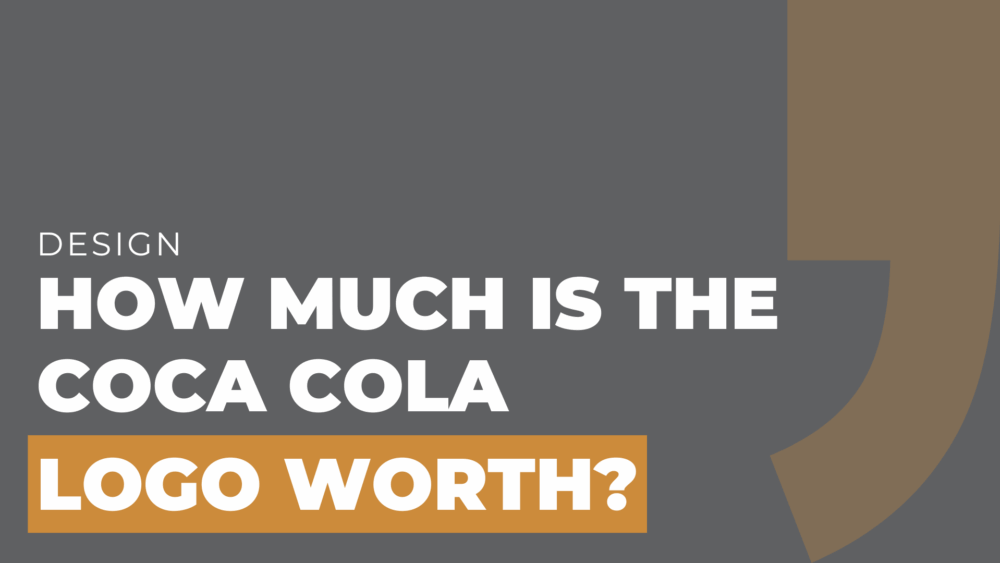The Coca-Cola logo is undeniably one of the most recognizable and iconic symbols in the world.
It’s joined brands like Nike and Apple, whose logos are world-recognized.
With its timeless design and rich history, it has become a global symbol of refreshment, happiness, and the Coca-Cola brand itself.
In this blog post, we will jump into the worth of the Coca-Cola logo, explore its meaning, trace its evolution throughout history, and unravel the reasons behind its enduring fame.
How much is the Coca-Cola logo worth?
Contrary to what one might expect, the Coca-Cola logo was actually created by Frank M. Robinson, the partner and bookkeeper of the company’s founder, John Pemberton, back in 1886.
Surprisingly, the logo itself holds no official monetary value today.
According to Business Insider, the cost of designing the Coca-Cola logo back then was $0.
It’s astonishing to think that such an iconic and valuable symbol was born out of simplicity and creativity without any significant financial investment.
What is the meaning of the Coca-Cola logo?
The Coca-Cola logo is imbued with symbolism that resonates with millions of people worldwide.
The distinctive red and white colors evoke feelings of joy, passion, and purity. The iconic
Spencerian script font, with its flowing letters and elegant curves, exudes a sense of classic refinement and timelessness.
These elements combined create a logo that represents the essence of the Coca-Cola brand – an enduring symbol of happiness, optimism, and shared moments of enjoyment.
What is the oldest Coca-Cola logo?
Since its inception, the Coca-Cola logo has undergone several transformations.
The earliest known logo used by the company featured elaborate Spencerian script lettering, which was prevalent during the late 19th century and early 20th century.
This logo emphasized the brand’s connection to tradition and elegance, setting the foundation for its timeless appeal.
Has Coca-Cola always had the same logo?
While the core elements of the Coca-Cola logo have remained consistent over the years, there have been subtle modifications to adapt to changing design trends.
The evolution of the logo has been a testament to the brand’s ability to remain relevant while retaining its iconic identity.
Why is the Coca-Cola logo so famous?
The fame of the Coca-Cola logo can be attributed to a combination of factors.
Firstly, Coca-Cola’s relentless marketing efforts and global presence have played a crucial role in making the logo universally recognized.
The brand’s consistency and commitment to quality have built trust and familiarity among consumers worldwide.
Secondly, the logo’s timeless design has transcended generations, appealing to people from all walks of life.
Its simplicity and elegance have made it instantly recognizable, leaving a lasting impression on the minds of consumers.
Lastly, the emotional connection that the Coca-Cola brand has fostered with its customers has further enhanced the logo’s fame.
Coca-Cola has successfully positioned itself as a symbol of joy, celebration, and togetherness, creating a strong bond with its audience that goes beyond mere refreshment.
The Coca-Cola logo is not only a valuable asset to the brand, but also a cultural icon that has stood the test of time.
While its worth may not be measured in monetary terms, its significance and impact are immeasurable.
Just like the Nike Swoosh, Coca-Cola’s scripted font is familiar to most people in the world.
This iconic logo continues to evoke feelings of happiness, nostalgia, and shared experiences around the world, solidifying Coca-Cola’s position as a global leader in the beverage industry.
So next time you see that familiar red and white script, remember the legacy and enduring appeal of the Coca-Cola logo – a symbol of joy, refreshment, and the power of effective branding.
Do you want your logo to join these famous symbols in representing timeless brands?
Commit to the branding process, including rebranding when necessary.
Strike for brand authenticity and excellence and you’ll watch your business flourish.


Comments are closed.